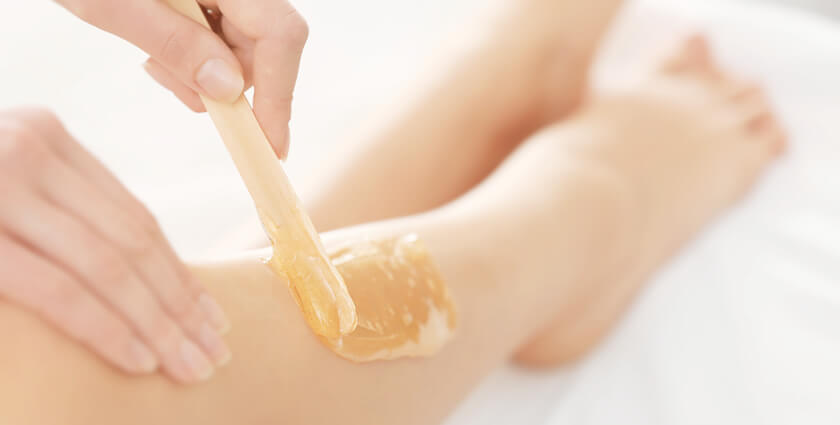Blog Article
Mastering the Art of Waxing: Vital Tips for a Pain-free Hair Elimination Experience
In the world of personal grooming, mastering the art of waxing is an ability that can substantially enhance one's hair elimination experience. From pre-waxing preparation to selecting the appropriate wax and grasping proper waxing methods, the trip to a pain-free waxing experience is paved with expertise and competence.
Pre-Waxing Prep Work
Before going through a waxing session, it is essential to appropriately prepare your skin to minimize pain and achieve optimal hair removal outcomes. Beginning by exfoliating your skin a day or 2 prior to your consultation to eliminate dead skin cells and avoid ingrown hairs. This action assists the wax stick better to the hair, guaranteeing an extra efficient removal process. Stay clear of hydrating on the day of your shaving session as it can create an obstacle between the wax and your hair, resulting in much less successful results. Furthermore, it is suggested to cut your hair to regarding a quarter of an inch prior to waxing to avoid unnecessary pain during the procedure.
Moreover, it is critical to clean your skin extensively prior to waxing to eliminate any type of oils, creams, or dirt that could interfere with the wax's capacity to grip the hair. This action not only improves the effectiveness of the waxing procedure yet additionally helps reduce the risk of post-waxing outbreaks - Laser Hair Removal. By complying with these pre-waxing preparation steps, you can guarantee a smoother and much more comfy hair removal experience

Picking the Right Wax
Picking the appropriate type of wax is necessary for making certain a comfy and successful hair removal procedure. There are a number of types of waxes available, each satisfying various skin types and hair appearances. Both main categories of wax are tough wax and soft wax. Tough wax is appropriate for sensitive areas like the face, underarms, and swimsuit line as it adheres just to the hair, making it less unpleasant for these delicate locations. On the other hand, soft wax is ideal for bigger areas like legs and arms as it is applied very finely and removed with towel strips.
When selecting a wax, consider your skin sensitivity, hair density, and the location you prepare to wax. For those with delicate skin, hypoallergenic waxes with included calming representatives like chamomile or aloe vera can help minimize irritation. Rugged hair might require a wax particularly formulated for solid hair elimination. In addition, if you are brand-new to waxing, it might be useful to begin with a gentle formula to gauge your skin's reaction prior to attempting more potent choices. Consulting with an expert esthetician can additionally provide valuable insight right into the very best wax for your individual demands.
Correct Waxing Strategy
To begin, it is necessary to clean the skin extensively prior to applying the wax. Additionally, always make sure that the wax is heated to the correct temperature to stay clear of burns or ineffective hair removal. Using the wax in the direction of hair growth and eliminating it against the hair growth assists to guarantee that the hair is pulled from the origin, resulting in smoother and longer-lasting outcomes.
Moreover, making use of small sections of wax each time and internet pressing strongly on the wax strip before elimination can help boost the efficiency of the process. Last but not least, keep in mind to use gentle pressure on the skin after waxing to lower and relieve any kind of discomfort soreness. By following these correct waxing strategies, you can achieve a much more effective and enjoyable hair removal experience.
Aftercare Tips

After waxing, it's essential to keep the waxed area tidy and free from irritants. Scrubing the skin 2-3 times a week, beginning a few days after waxing, can additionally assist in preventing in-grown hairs and maintaining the skin smooth.
Additionally, it's recommended to avoid activities that may create excessive sweating, such as intense workouts, instantly after waxing to avoid further inflammation. Using a cool compress or aloe vera gel can assist decrease inflammation if any kind of redness or bumps persist after waxing. Following these aftercare suggestions vigilantly can ensure a comfortable and reliable waxing experience with resilient results

Troubleshooting Common Issues
Attending to typical issues that might develop during the shaving procedure is vital to guaranteeing a smooth and successful hair removal experience. One typical problem is skin irritability, which can happen due to delicate skin or incorrect shaving methods. To reduce this, making use of a relaxing cream containing aloe vera or chamomile post-waxing can help soothe the skin. Another concern is in-grown hairs, where hair swirls back or grows sidewards right into the skin after waxing. Normal peeling with a gentle scrub can avoid in-grown hairs by eliminating dead skin cells and allowing hair to grow openly. Additionally, if you experience wounding or redness after waxing, using a chilly compress can lower swelling and calm the skin. Finally, if you observe uneven hair removal or spots of missed out on hair, consider changing your waxing strategy or seeking expert aid for more detailed areas. By resolving these common waxing problems proactively, you can improve the total efficiency and convenience of your hair elimination regimen.
Conclusion
In verdict, understanding the look at here art of shaving needs proper preparation, choosing the best wax, using the correct strategy, and complying with aftercare suggestions. With practice and attention to information, waxing can be a reliable hair removal method.
Additionally, it is critical to clean your great site skin thoroughly prior to waxing to eliminate any oils, lotions, or dirt that could conflict with the wax's ability to grasp the hair. The two primary categories of wax are tough wax and soft wax.When selecting a wax, consider your skin sensitivity, hair density, and the location you intend to wax.Additionally, using tiny sections of wax at a time and pushing strongly on the wax strip before elimination can assist improve the effectiveness of the process. After waxing, it's important to keep the waxed area free and tidy from irritants.
Report this page



































